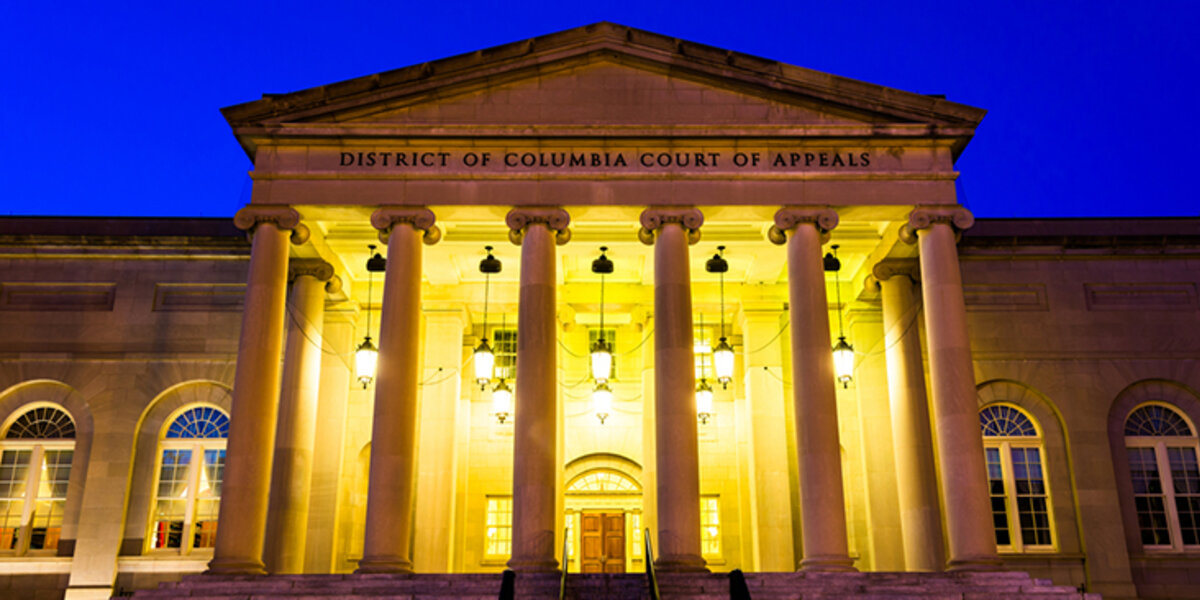Checking in with the Clean Power Plan
Let's Save Energy
Alliance to Save Energy's Blog
Checking in with the Clean Power Plan

With so many keen eyes watching (especially here at the Alliance to Save Energy!), it has been widely reported that the Clean Power Plan (CPP) had a packed day in court two weeks ago. However, you may be left wondering what this means for the fate of the CPP and the role of energy efficiency, so let’s check in…
On September 27, the D.C. District Court of Appeals heard oral arguments on challenges to the CPP. Attorneys from both sides argued their case in front of an en banc court of ten judges (instead of the typical three-judge panel), underscoring just how high the stakes were. Over the course of an unprecedented seven hours of arguments - well over the traditional length of 1 hour or less -three main issues appeared at the core of this case:
1. Is the EPA reaching beyond its authority?
First up and most pivotal is the question of whether the EPA is reaching beyond its statutory authority granted by Congress to regulate the CO2 emissions of power plants. This argument – which was the longest of the day – centers on whether the CPP could be considered “transformative.”. In the end, the court must decide what the scope of the rule’s direct effects is. Is EPA applying familiar oversight to a previously unregulated air pollutant that complements a shift in power generation that’s already begun? Or, is EPA taking a wholly new approach that would transform the power sector and economy by forcing a shift from coal to cleaner energy sources? The former is a green light for the CPP, and the latter a red light. In the Alliance’s opinion, the former is already clear: efficiency improvements contributed to 60% of the increase in U.S. energy productivity since 1980 and avoid more than 2.5 billion tons of CO2 annually.
2. Which of the two versions of the 1990 amendment to the Clean Air Act (CAA) should the court consider?
Due to a drafting conflict, Section 111(d), which authorizes the regulation of CO2 under the CPP, is different in the House version and the Senate version of the CAA. The House version bars EPA from limiting power plant emissions under 111(d) if they are already regulated under other sections of CAA (in this case pointing to Section 112 which controls mercury and other hazardous air pollutants from power plants), while the Senate version does not prohibit such actions.
3. What about states’ rights?
Enter the constitutional questions, and whether the EPA is infringing on states’ rights by dictating a state energy mix through the CPP. EPA allies assert that states, power companies and the markets will ultimately determine how state energy mixes will be impacted by choosing the most cost-effective measures to limit emissions. The option for states to deploy energy efficiency as a compliance mechanism is an important tool to meet the goals of the CPP, with a typical return on investment of over 20%.
Two additional issues involved in the case did not get much attention, leaving the judges seemingly unmoved. Challengers to the CPP criticize that the difference between EPA’s draft and final rule were substantial enough to warrant another draft. In the slim chance that the judges agree with this, the CPP will go back to EPA without ruling on the merits of the case. Additionally, challengers claim that EPA has failed to demonstrate that each state’s goal is achievable in a cost-effective way within the state’s boundaries or to prove that interstate trading markets will develop sufficiently enough to achieve state goals. However, EPA points to the economic analyses performed while generating state goals as evidence that they are achievable.
What does it all mean going forward?
We can expect the court to take a few months to reach a decision. Whatever the court’s ruling, it is widely held that the case will be appealed to the U.S. Supreme Court. If the Supreme Court decides against hearing the case, it will revert to the decision of the lower court. If the Supreme Court decides to hear the case, and is split 4-4 (assuming a new justice is not appointed to fill the seat left open by the passing of Justice Scalia), again the decision will revert to the lower court’s decision. In either case, this a pivotal step for the CPP.
Now that the Paris Agreement has been ratified and will enter into force, the CPP is even more vital as it is the centerpiece of the U.S. plan to reduce greenhouse gas emissions. Luckily, with 28 states either continuing their planning or considering plans, many states have already begun to work toward compliance with the CPP using pollution reduction techniques such as energy efficiency, which is the easiest, fastest, and most cost-effective method available.
Click here to learn more about the Alliance’s work on the Clean Power Plan.
RECENT BLOG POSTS
STAY EMPOWERED
Help the Alliance advocate for policies to use energy more efficiently – supporting job creation, reduced emissions, and lower costs. Contact your member of Congress.
Energy efficiency is smart, nonpartisan, and practical. So are we. Our strength comes from an unparalleled group of Alliance Associates working collaboratively under the Alliance umbrella to pave the way for energy efficiency gains.
The power of efficiency is in your hands. Supporting the Alliance means supporting a vision for using energy more productively to achieve economic growth, a cleaner environment, and greater energy security, affordability, and reliability.



